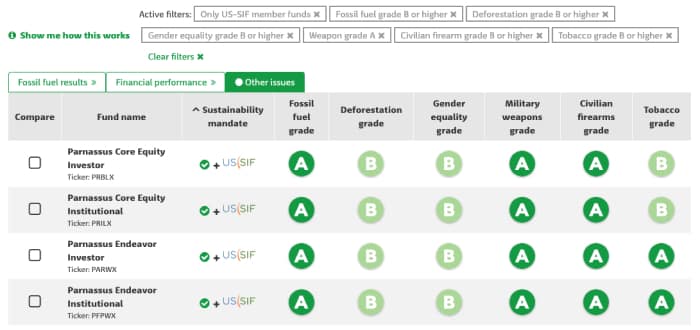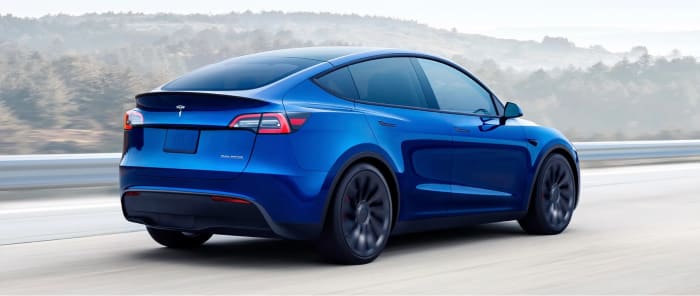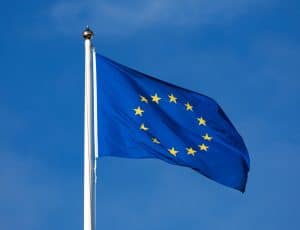Right now, the voluntary carbon markets are still in their early stages.
Having surpassed $10.8 billion USD in transaction value in 2023, there’s tremendous amounts of room for growth – as well as plenty of catalysts.
The Taskforce on Scaling Voluntary Carbon Markets forecasts that in order to meet the climate change targets set forth in the Paris Agreement, the voluntary carbon markets will need to grow 15-fold by 2030 and 100-fold by 2050, from 2020 levels.
Those are the kind of returns that make any investor sit up and take notice.
As of the time of writing, there still isn’t a very well-developed retail market for the voluntary carbon markets. Corporations and institutional investors have a better selection, as they can negotiate directly with carbon offset projects and the like.
Still, there are a couple ways to get your feet wet in the carbon markets if you’re an individual investor. We’ll go through some examples.
Executive Summary
1. Carbon Mutual Funds and ETFs
One of the simplest and lowest-risk ways to invest in the carbon markets is through a fund. As many such funds have diversified holdings, this helps to reduce the risk of investing in one, although in exchange, your potential return will also be lower.
There is a wide range of levels of exposure to consider here. The lowest possible level of exposure to the carbon markets would be to invest in funds that are considered “low-carbon”.
These are funds whose mandates are not restricted purely to carbon-credit-related companies, but include any business whose operations are considered to have a low impact on the environment, or companies who have made voluntary emissions reductions or even net zero pledges.
In funds like these, you won’t find any holdings from oil & gas, coal, steel, or any other such “dirty” industries unless they’ve already made net-zero commitments. Examples of such funds include the iShares MSCI ACWI Low Carbon Target ETF (CRBN), or BlackRock’s U.S. Carbon Transition Readiness ETF (LCTU).
Still, that leaves plenty of options on the table – for instance, many such funds often include the FAANGM companies in their holdings, as they are investment industry darlings with relatively clean operations thanks to their business as tech companies. And even some companies with dirty operations, like Exxon Mobil or ConocoPhillips, can make the cut due to their net-zero commitments.
Some other low-carbon ETFs focus on so-called “green bonds” instead, which are fixed-income debt instruments specifically issued by companies and governments looking to finance sustainable, environmentally friendly projects. A municipal government, for instance, might issue a green bond to help fund the development of a public transit system. An example of a fund focusing on green bonds would be the iShares Global Green Bond ETF (BGRN).
While such low-carbon funds may not seem like a very direct way of investing in the carbon markets, removing any exposure to dirty companies from your portfolio is a great way to start making green investments. After all, it is very likely that as the global push for net-zero goes more and more mainstream, dirty companies will be first on the chopping block for investors and institutions alike.
- Think of it like paying off your debts before investing your money. By first eliminating the dirty companies and funds that will drag your portfolio down in the future, you will be able to put your money to better use elsewhere.

There already exist tools such as Fossil Free Fund to help you identify mutual funds and ETFs that have minimized their exposure to dirty investments. Choosing these low-carbon funds over competing products that lack such restrictions would be an easy change to make as a start to your carbon portfolio.
Moving up from funds that simply do not invest in dirty companies, the next level of exposure would be funds that only invest in green, carbon-market-related companies. We’ll call these “green funds.”
In such funds, you’d be able to find companies like Tesla (TSLA) or Brookfield Renewable Partners (BEP).
Since the carbon and clean energy markets still aren’t fully developed yet, there aren’t all that many companies in the space. As a result, there are fewer green funds than there are low-carbon funds.
However, these green funds have significantly more exposure to the carbon markets than the low-carbon funds that simply do not have any dirty companies in their holdings.
That’s because most, if not all, of the companies that green funds invest in are already net zero, or even net negative. TSLA, for example, earned around $1.79 billion in revenue from carbon credit sales in California’s compliance market in 2023.
In other word, these companies can already generate carbon credits, and would most strongly benefit from the explosive growth that needs to happen in the voluntary carbon markets to stay on track with the Paris Agreement’s targets.
The final category of funds would be those whose primary holdings consist of carbon credit futures. These funds are the riskiest, as they aren’t diversified at all, but they also directly track the performance of their underlying carbon credits nearly one-to-one.
Investing in such funds would be analogous to investing in a fund that only holds physical gold, rather than a fund that invests in gold producers and explorers. Though the performance of such a fund would most closely match the performance of carbon credits themselves, that doesn’t necessarily mean they would provide the best return, either, despite their riskiness.
This type of fund is best left to veteran investors who have a specific goal in mind when adding such a fund product to their investment portfolio.
You can find all listed funds of each type described above on our Stocks Watchlist.
2. Green Companies

For sophisticated investors with a narrower scope in mind, green companies are another great way to invest in the carbon credit market.
However, since there are far more jurisdictions without compliance markets than those with, there are lots of green companies who haven’t been able to fully tap into the carbon credit market yet. A unified global carbon credit marketplace, such as one put in place through the ratification of Article 6 of the Paris Agreement, would go a long way towards solving that.
Electric vehicle manufacturers, renewable energy companies, biofuel companies, battery tech companies, and waste recovery companies are just some of the examples of the many different types of green companies that could potentially leverage the sale of carbon credits as part of their revenue streams down the road, on top of their regular business operations.
There are already many publicly listed green companies that could make for potential investment opportunities, such as Tesla competitor NIO Inc. (NIO), or solar energy equipment and services provider First Solar (FSLR). However, since the green tech craze is starting to take off, there are also many private companies looking to raise capital right now.
While investing in private companies can be much riskier than investing in publicly traded companies since there’s no guarantee you’ll be able to exit your position easily, they tend to offer much more attractive pricing and terms for that exact same reason. If you can get access to private deals through your broker or other means, they can be worth considering if they fit your risk profile.
3. Carbon Credits Futures

For the most direct exposure to the voluntary carbon markets, purchasing carbon credit futures, such as European Union Allowance futures on the ICE, is a viable option as a retail investor.
However, this method can be quite complicated and risky compared to other forms of green investing and is beyond the scope of this article.
Carbon offset projects would theoretically offer the next best exposure to carbon credits. Unfortunately, at the moment it’s quite difficult for retail investors to directly invest in carbon offset projects, as they tend to raise capital privately.
That said, there are companies that focus on investing in carbon offset projects, making the generation and sale of carbon credits the primary component of their business model. These companies have excellent exposure to the growth of carbon credits and the voluntary carbon markets. Carbon Streaming Corporation (NETZ.NEO) is one such example.
4. Company Watchlist
The full list with ticker and prices can be found here. A summary of the companies are shown below.
CRBN
The iShares MSCI ACWI Low Carbon Target ETF tracks the index of the same name, and contains holdings comprised of over 1,000 low-carbon companies around the world. Top holdings are heavily weighted towards U.S. stocks and include Apple, Microsoft, and Amazon. While it’s low risk thanks to its broad diversification, it provides less exposure to the growth of the carbon markets in return. Similar to, but much larger than, LOWC which is managed by a different firm.
GRN
The iPath Series B Carbon ETN tracks the Barclays Global Carbon II TR USD Index, which is almost entirely comprised of EU ETS carbon credit futures. As a result, this ETN will closely follow the price performance of EU ETS carbon credits, providing good exposure to the growth of the carbon markets, though with greater risk and volatility.
KCCA
The KraneShares California Carbon Allowance ETF provides direct exposure to the California Carbon Allowances that trade under California’s cap-and-trade program. As a result, this ETF will closely follow the price performance of California’s CCA carbon credits, providing good exposure to the growth of the carbon markets, though with greater risk and volatility.
KEUA
The KraneShares European Carbon Allowance ETF provides direct exposure to the European Union Allowances that trade under the EU’s Emissions Trading Scheme. As a result, this ETF will closely follow the price performance of EU ETS carbon credits, providing good exposure to the growth of the carbon markets, though with greater risk and volatility.
KRBN
The KraneShares Global Carbon ETF provides exposure to the EU ETS carbon credits, California’s CCA carbon credits, and the RGGI carbon credits of the northeastern United States. Though current portfolio weighting heavily favours European Union Allowances, this ETF does cover all three major compliance markets, providing good exposure to the growth of the carbon markets with less risk and volatility than the other carbon credit futures ETFs.
LCTU
The BlackRock U.S. Carbon Transition Readiness ETF is comprised of mid-to-large-cap U.S. companies that are considered to be better positioned to benefit from the transition to a low-carbon economy. With over 300 holdings in its portfolio, this ETF won’t provide as much direct exposure to the growth of the carbon markets but will provide more long-term stability thanks to its diversified holdings.
LCTD
The BlackRock World ex U.S. Carbon Transition Readiness ETF is comprised of mid-to-large-cap global companies that are considered to be better positioned to benefit from the transition to a low-carbon economy. With over 300 holdings in its portfolio, this ETF won’t provide as much direct exposure to the growth of the carbon markets but will provide more long-term stability thanks to its diversified holdings.
LOWC
The SPDR MSCI ACWI Low Carbon Target ETF tracks the index of the same name, and contains holdings comprised of over 1,000 low-carbon companies around the world. Top holdings are heavily weighted towards U.S. stocks and include Apple, Microsoft, and Amazon. While it’s low risk thanks to its broad diversification, it provides less exposure to the growth of the carbon markets in return. Similar to, but much smaller than, CRBN which is managed by a different firm.
NETZ.NEO
Carbon Streaming Corporation is a royalty-type company focused on growing a portfolio of high-quality carbon credit streams. By providing capital to fund carbon credit projects, NETZ earns the right to receive all or a fixed portion of all future carbon credits generated by said projects. Revenue can then be derived from the sale of these carbon credits. Though a higher risk investment, NETZ provides excellent exposure to the growth of the carbon markets.
SMOG
The VanEck Low Carbon Energy ETF is a green fund that tracks the MVIS Global Low Carbon Energy Index, and its holdings are comprised of clean energy companies. These components include renewable energy companies, electric vehicle companies, battery tech companies, and so on. With just over 70 holdings, this ETF is less diversified than most low-carbon funds but provides more targeted exposure to the growth of the carbon markets in return.
SPYX
The SPDR S&P 500 Fossil Fuel Reserves Free ETF tracks the S&P 500 Index but doesn’t hold any of the companies in the S&P 500 that own fossil fuel reserves. That’s just 11 companies out of 500, so this ETF will still closely mimic the performance of the S&P 500 Index, but with a lower carbon footprint. This ETF would serve as an excellent replacement in any portfolio that already holds a fund or other product linked to the S&P 500.
BGRN
The iShares Global Green Bond ETF follows an index comprised of investment-grade green bonds issued to fund environmental projects around the world. With over 600 holdings primarily comprised of sovereign and other government-related debt, BGRN can add green exposure to fixed income portfolios.
GRNB
The VanEck Green Bond ETF tracks the S&P Green Bond U.S. Dollar Select Index, which is comprised of U.S. dollar-denominated bonds issued to fund environmental projects around the world. With nearly 300 holdings largely comprised of sovereign and other government-related debt, GRNB can add green exposure to fixed income portfolios.



